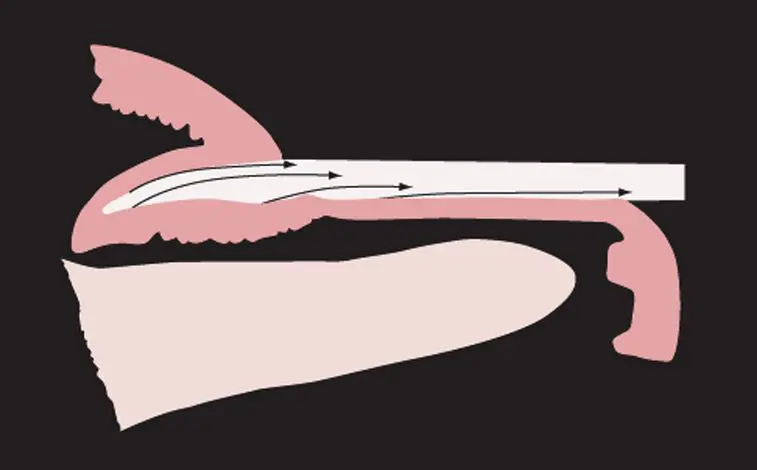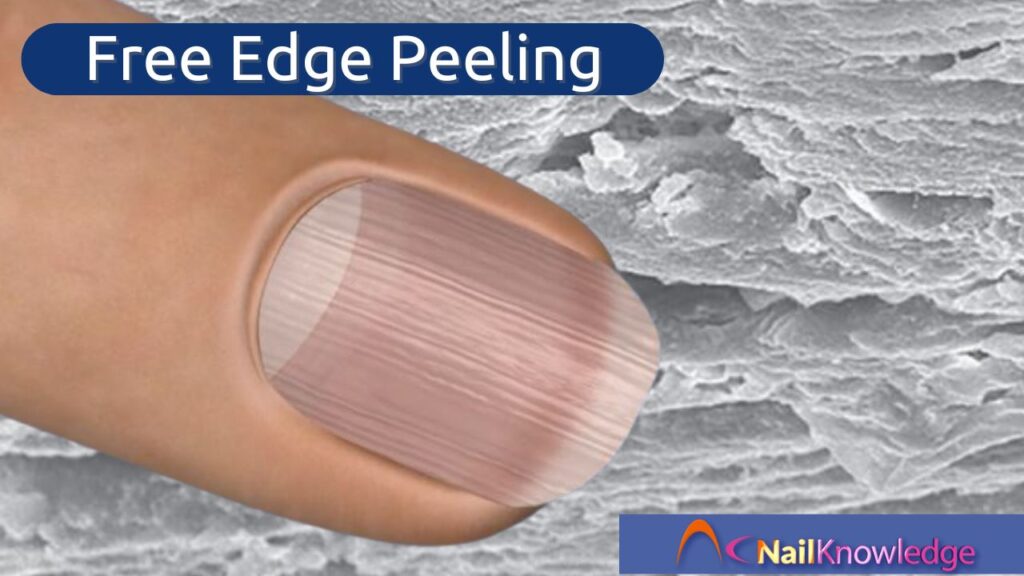Hiểu về hiện tượng bong tróc cạnh tự do: Tại sao phần trên của móng tay của bạn luôn có vẻ bong tróc đầu tiên
Bạn có bao giờ để ý thấy móng tay của mình có vẻ như bị bong ra không? đứng đầu side of the free edge, rather than the underside? It’s one of those beauty quirks that might seem random or just plain annoying, but it turns out, there’s a fascinating biological reason behind it. The phenomenon of free edge peeling is deeply rooted in the natural growth pattern of your nail plate, and once you understand what’s happening beneath the surface, it all starts to make a lot more sense.
Let’s take a deeper look at why this happens, what your nails are trying to tell you, and what you can do to keep those tips strong and intact.
The Nail Plate’s Journey: How Nail Cells Grow and Travel
To understand free edge peeling, we have to begin at the source, the nail matrix. This is the root zone where all nail cells are born. Now, not all nail cells take the same path as they mature and move forward. Think of the nail matrix as a factory with two main production lines: one at the back (called the dorsal matrix) and one near the front (lưỡi liềm, the pale, crescent-shaped area you can sometimes see near the base of your nail).
Here’s where things get interesting. The nail cells that form on the top surface of your nail plate come from that dorsal matrix at the back. They have to travel a longer journey, roughly 50 to 60 days, just to reach the front edge of the lunula. That’s almost two months of aging, hardening, compacting, and being shaped into a protective shield as they slowly move forward.


In contrast, the nail cells underneath—the ones that make up the underside of your nail plate, come from the lunula, right at the front of the matrix. These cells are much newer and exposed to the outside world for a far shorter time.
Vậy điều này có ý nghĩa gì đối với việc lột da?
Tại sao cạnh tự do bị bong ra từ phía trên
Here’s the deal: since the top layers of your nail have been around the longest, they’re older, more compacted, and harder. But despite their toughness, they’ve also had more time to be affected by the environment, think water, air, sunlight, detergents, polish removers, and all the physical stress your hands go through daily. The free edge peeling we see is often the result of these old, hardened cells on the top finally giving way.
It’s a bit like the shingles on a roof, they’re built to endure a lot, but over time, wear and tear eventually cause some to lift or crack. Meanwhile, the underside of the nail, being newer and less exposed, generally stays intact longer. Plus, it gets less of that day-to-day abuse, fewer chemicals, less friction, and less sunlight.
It’s this difference in cell age and exposure that explains why free edge peeling happens from the top down.
Vai trò của Eponychium và nếp gấp móng tay
Now, while we’re discussing nail anatomy, let’s not forget the eponychium, the living tissue that gives rise to the cuticle. Though once thought to be thick and robust, modern research shows it’s only about 0.1 to 0.15mm thick. This thin layer protects the nail matrix and contributes to cuticle development.
Tại sao điều này lại quan trọng trong bối cảnh lột da? Bởi vì gây tổn hại lớp biểu bì or the proximal nail fold (PNF), that little “flap” of skin at the base of your nail, can actually disrupt healthy nail growth. Over-cutting or picking at this area (a common habit or salon misstep) can cause trauma to the matrix, impacting the quality of the nail plate as it forms.
Khi nền móng bị căng thẳng hoặc bị thương, nó có thể tạo ra các lớp yếu hơn hoặc không đều trên phiến móng, tạo điều kiện cho tình trạng bong tróc cạnh tự do sau này.
Vậy, bạn có thể làm gì về vấn đề này?
Sau đây là một số mẹo thực tế giúp giảm hoặc ngăn ngừa tình trạng bong tróc ở mép tự do:
- Dưỡng ẩm hàng ngày: Nail plates are made of keratin, like your hair, and they need hydration. Oils like jojoba or vitamin E can penetrate the nail surface and keep it flexible.
- Avoid overexposure to water: Việc làm ướt và làm khô liên tục làm yếu lớp keratin. Đeo găng tay khi lau dọn hoặc rửa bát.
- Hãy nhẹ nhàng với các công cụ của bạn: Don’t use your nails as tools for scraping or prying. That stress adds up over time.
- Bỏ qua việc nộp hồ sơ thô: Use a fine-grit dũa móng tay và luôn luôn dũa theo một hướng. Việc giũa qua lại mạnh tay sẽ làm sờn lớp trên cùng, đẩy nhanh quá trình bong tróc.
- Don’t pick at polish or gels: When you peel polish or gel off, you’re often taking the top layer of the nail with it, literally causing free edge peeling yourself.
Hiểu biết có nghĩa là trao quyền
At the end of the day, your nails are telling a story. That little bit of peeling at the tip isn’t just cosmetic, it’s the visible result of weeks of cell movement, environmental exposure, and possibly a few habits that need rethinking. Now that you know the science behind free edge peeling, you can treat your nails with a bit more intention and care.
And remember: strong, healthy nails don’t come from quick fixes. They grow from the inside out, slowly and steadily, like the nail cells themselves, on their quiet two-month journey from matrix to free edge.
So maybe next time you spot a little flaking at the tip, you won’t groan. Instead, you’ll smile and think, “Ah, so that’s what two months of wear looks like.”


